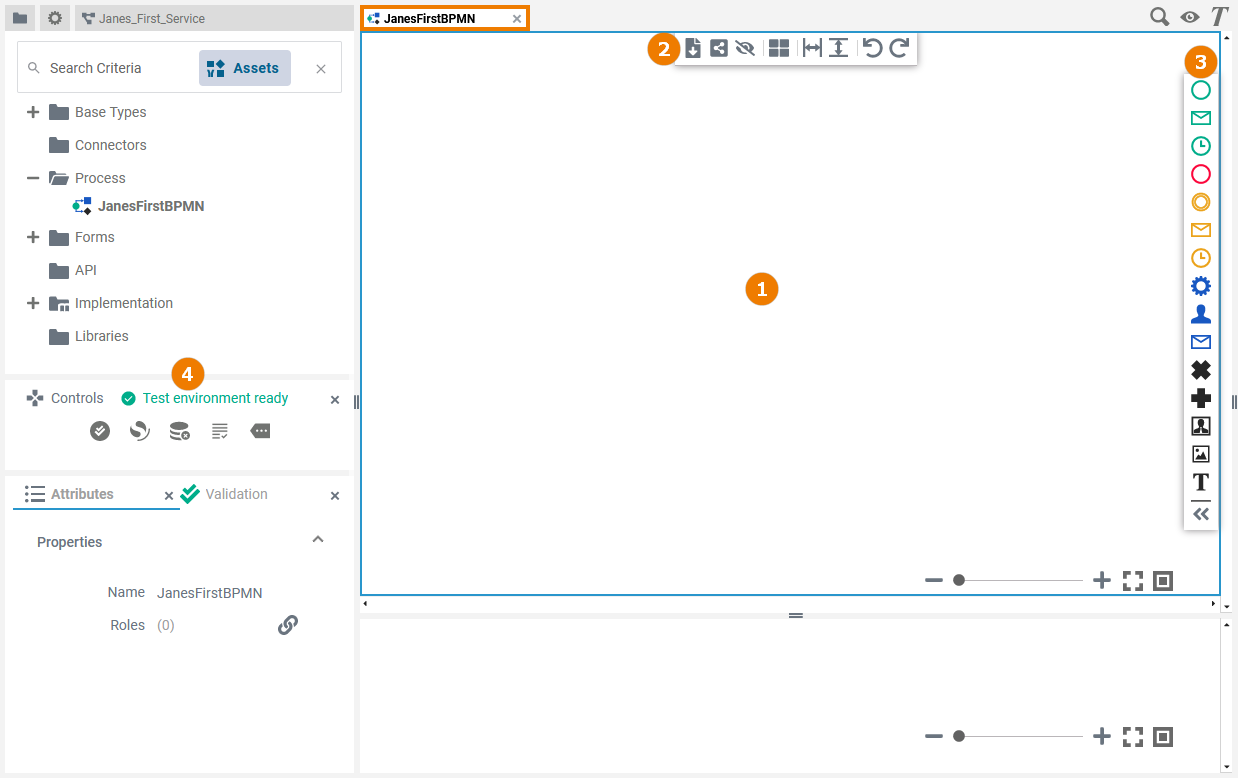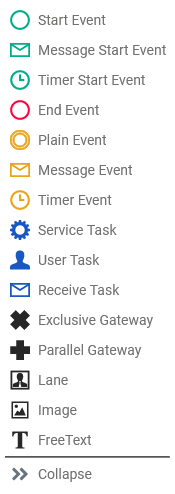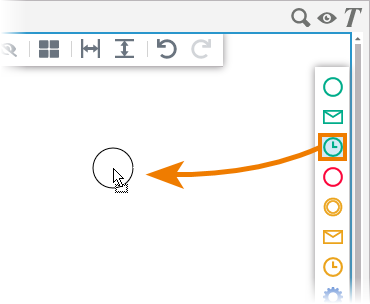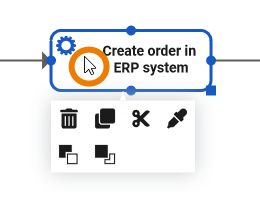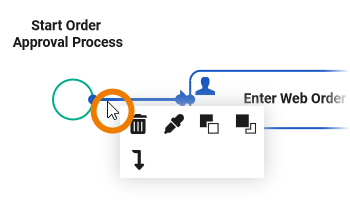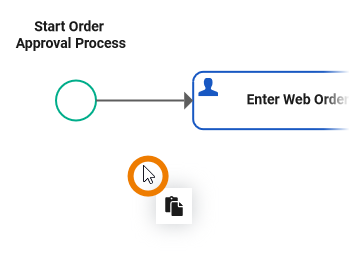When you open a model from the service panel, a second tab will open, displaying the model on the diagram pane. This is where you design your BPMN model.
| The diagram pane consists of different areas: |
Customizing the Diagram Pane
|
Modeling on the Diagram Pane
While modeling, some general functionalities help you to browse through your model, and to adjust your working location within the model. Refer to Customizing Editors and Panels for more details.
The Toolbars
Two toolbars are available for work on the diagram pane:
The Model Toolbar
| The model toolbar assists you during modeling on the diagram pane. |
| Enabled options are highlighted in blue. |
The following table explains the available tools:
| Tool Icon | Tool Name | Description |
|---|---|---|
| Export | Use this icon to export your BPMN model in JSON format. |
| Share | If you click the Share icon, the URL of your BPMN model is copied to the clipboard and you can paste it elsewhere, for example in an email. |
| Hide Execution Pane | Use this icon to hide the execution pane. This allows to gain more space during modeling. |
| Toggle grid | |
| Insert/Remove horizontal space | |
| Insert/Remove vertical space | |
| Undo | |
| Redo |
The Elements Toolbar
The elements toolbar contains all BPMN elements that you can create on the diagram pane.
| By default, the elements toolbar only displays the icons of the available BPMN elements. But you can also expand the toolbar by using the | |
| In its expanded version, the names of all elements are also displayed.
| |
|
The Diagram Context Menus
Various context menus support the user during modeling on the diagram pane:
- The Elements Context Menu
- The Tools Context Menu
- The Extended Tools Context Menu
- The Relation Context Menu
- The Diagram Context Menu
Elements Context Menu | ||||||||||||||||||||||||
|---|---|---|---|---|---|---|---|---|---|---|---|---|---|---|---|---|---|---|---|---|---|---|---|---|
| If you click on an element, the element context menu opens. You can use it to create new elements instead of using the elements toolbar. Choose one of the icons to create the corresponding element:
If you create a new element using the context menu, the relation to the current element is drawn automatically. | |||||||||||||||||||||||
Tools Context Menu | ||||||||||||||||||||||||
| If you right click on an element, the tools context menu opens. Use it to edit the current element. The following options are available:
| |||||||||||||||||||||||
Extended Tools Context Menu | ||||||||||||||||||||||||
| If you have selected more than one element on the pane, the tools context menu is enhanced with additional options:
| |||||||||||||||||||||||
Relation Context Menu | ||||||||||||||||||||||||
| Right-click a relation to open the relation context menu. Only the following options are applicable to relations:
| |||||||||||||||||||||||
Diagram Context Menu | ||||||||||||||||||||||||
| With a right-click on the diagram pane itself, you open the diagram context menu:
| |||||||||||||||||||||||
Shortcuts
You can also use shortcuts on the diagram pane. The following list of shortcuts can be searched. Enter your search term in the Global Filter field.
|
